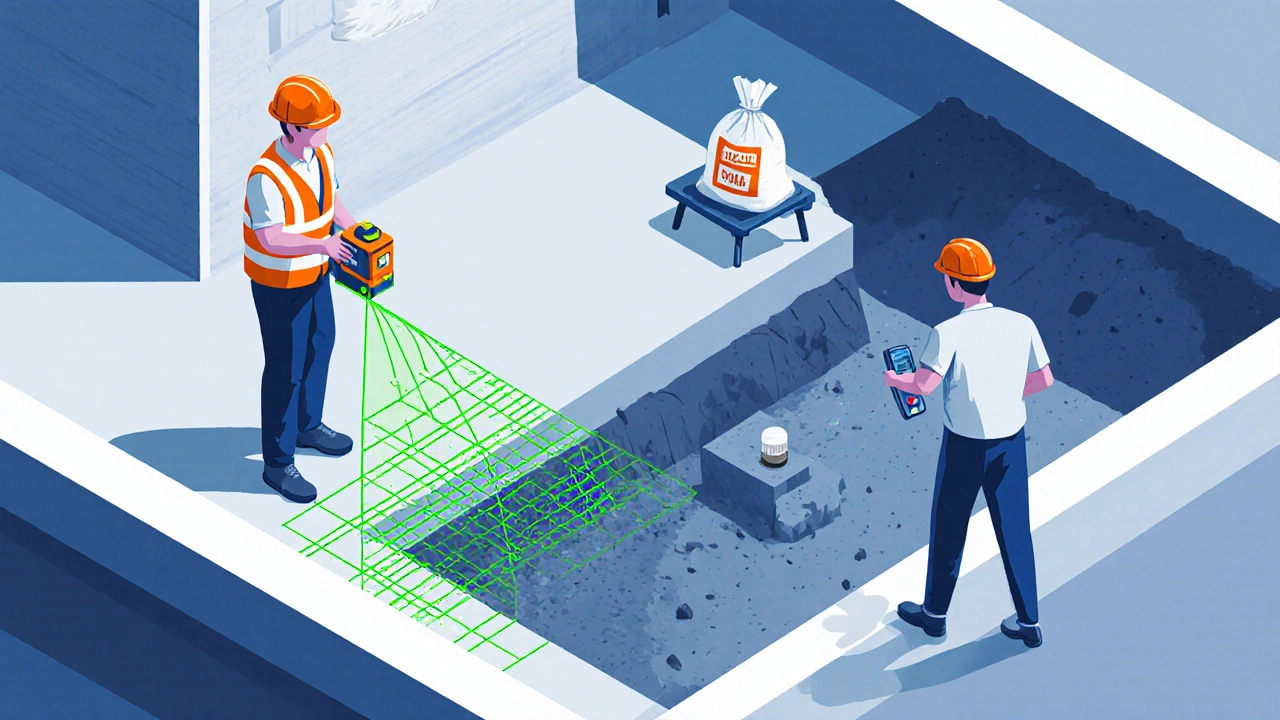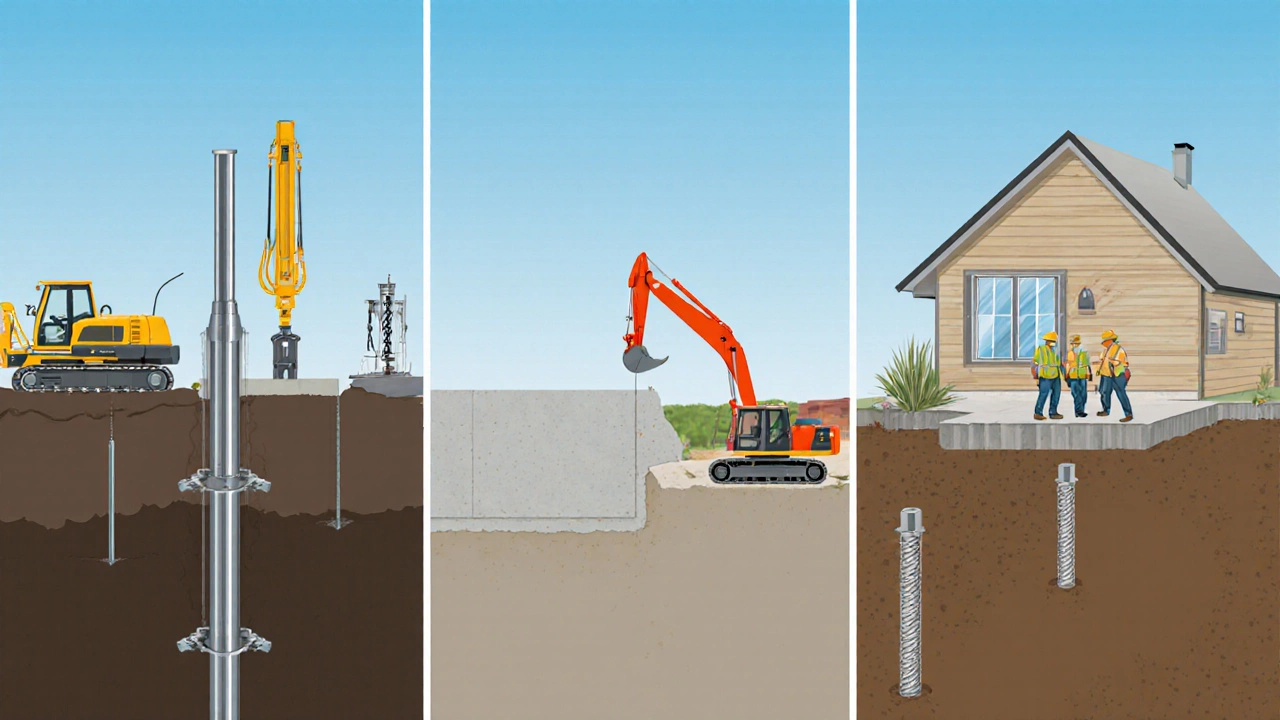Foundation Problem Checker
Check for Common Foundation Warning Signs
Answer the following questions to identify potential foundation issues:
Foundation Risk Assessment
When house foundation problems is a condition where the structural base of a home shifts, cracks, or settles, leading to potential damage to walls, floors and doors, many homeowners panic. The good news? You don’t have to guess your way through it. This guide walks you through the warning signs, the exact steps to take, the repair options available in 2025, and how to keep future issues at bay.
Recognizing the Red Flags
Before you call anyone, walk around your house with a keen eye. The most common indicators include:
- Cracks that run horizontally across interior walls or appear as stair‑step patterns in brick.
- Doors and windows that stick or won’t close properly.
- Uneven floors that bounce when you walk across them.
- Gaps between the wall and the ceiling or floor.
- Excessive moisture or water pooling near the foundation after rain.
If you spot any of these, write them down. A clear list will help professionals diagnose the issue faster.
Immediate Actions to Take
Don’t rush into expensive repairs right away. Follow these low‑cost, safe steps first:
- Check soil type around your home. Expansive clay soils, common in parts of Auckland, swell when wet and shrink when dry, causing the foundation to move.
- Measure the moisture content of the ground. A simple garden moisture meter can tell you if the soil is overly saturated.
- Ensure gutters and downspouts direct water at least six feet away from the house. A clogged gutter can dramatically raise drainage system pressure.
- Temporarily seal any visible cracks with epoxy filler to prevent water intrusion while you arrange a professional inspection.
These actions buy you time and may even resolve minor movement caused by temporary water saturation.

Getting a Professional Assessment
The next step is to bring in a qualified structural engineer. They have the tools and training to assess load‑bearing walls, measure settlement, and recommend the appropriate repair method.
During the inspection, expect the engineer to:
- Use a laser level or digital inclinometer to gauge floor slope.
- Perform a foundation depth measurement to see how far any movement has traveled.
- Take soil samples to determine if expansion or erosion is a factor.
- Document all observed cracks with photographs and measurements.
Ask for a written report summarizing the problem, the cause, and a recommendation matrix. This document is essential when comparing contractors and obtaining financing.
Common Repair Methods Explained
Once you have a diagnosis, you’ll need to choose a repair method. The three most widely used techniques in 2025 are:
- Piering - Inserting steel piers deep into stable soil and lifting the foundation back to level.
- Slabjacking - Pumping a cementitious grout underneath a sunken slab to raise it.
- Underpinning - Extending the foundation’s footings deeper or wider, often using concrete footings or helical piles.
Each method has its sweet spot. Below is a quick side‑by‑side look.
| Method | Best For | Typical Cost (NZD) | Time to Complete | Invasiveness |
|---|---|---|---|---|
| Piering | Significant settlement, unstable soil | 8,000 - 15,000 | 1‑2 weeks | Moderate - small access holes |
| Slabjacking | Minor sinking of concrete slabs | 4,000 - 9,000 | 2‑4 days | Low - drilling several holes |
| Underpinning | Cracks in load‑bearing walls, deep‑seated movement | 12,000 - 25,000 | 2‑4 weeks | High - extensive excavation |
When budgeting, remember that permits, engineering fees, and potential landscaping restoration can add 10‑20% to the quoted price.
Cost Management and Financing Options
Foundation repair isn’t cheap, but there are ways to ease the financial burden:
- Many banks offer home improvement loans with low interest rates for repairs that increase property value.
- Local councils sometimes run grant programs for homes in flood‑prone zones; check Auckland Council’s latest 2025 initiatives.
- Some contractors provide financing plans - zero‑interest for the first six months is common.
- Get at least three written quotes. Use the engineer’s report as leverage to negotiate price points.
Always verify that the contractor holds a current license and appropriate insurance before signing any agreement.

Preventative Maintenance to Avoid Future Issues
After the repair, keep the foundation happy with these habits:
- Maintain consistent soil moisture content. Too dry or too wet can cause movement. Use a smart irrigation controller to keep the yard evenly watered.
- Install or upgrade a drainage system that routes water away from the house. French drains and weep holes work well in Auckland’s rainy climate.
- Regularly clean gutters and downspouts to prevent overflow.
- Landscape away from the foundation. Avoid planting large trees within five meters of the house, as their roots can disrupt soil stability.
- Schedule a professional inspection every 5‑7 years, especially after major storms.
These simple checks can catch early settlement before it becomes a costly repair.
DIY Checks vs When to Call a Pro
There’s a fine line between a helpful DIY inspection and a risky amateur repair. Here’s a quick rule‑of‑thumb:
- DIY: Visual inspections, measuring cracks, cleaning gutters, adding temporary fillers.
- Professional: Lifting a settled slab, installing piers, underpinning, any work that bears on structural integrity.
Attempting to install piers or inject grout yourself without proper training can void insurance and cause more damage. When in doubt, get a second opinion from a certified structural engineer.
Frequently Asked Questions
How long does a foundation repair usually take?
Most repairs finish within 1‑2 weeks for piering, 2‑4 days for slabjacking, and up to 4 weeks for underpinning, depending on weather and site access.
Can I repair foundation cracks myself?
Small non‑structural cracks can be sealed with epoxy, but any crack wider than 2mm, or those that are horizontal or stair‑step, should be evaluated by a professional.
What causes foundation movement in Auckland?
The main culprits are expansive clay soils, high rainfall leading to saturated ground, and poor drainage around the house. Seismic activity can also play a role, though it’s less common.
Is foundation repair a good investment?
Yes. A stable foundation preserves structural integrity, prevents further damage, and can increase your home’s resale value by 5‑10% in most Auckland neighborhoods.
Do I need a permit for foundation repairs?
In Auckland, any work that alters load‑bearing elements or excavates deeper than 1meter requires a building consent. Your structural engineer will usually handle the application.
Foundation issues can feel overwhelming, but with the right knowledge, you can act quickly, choose the proper repair method, and protect your home for years to come. Keep an eye on moisture, stay on top of maintenance, and don’t hesitate to call a qualified professional when the signs appear.




Write a comment